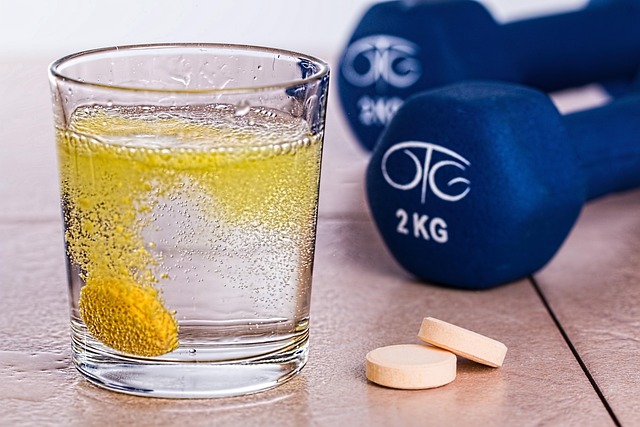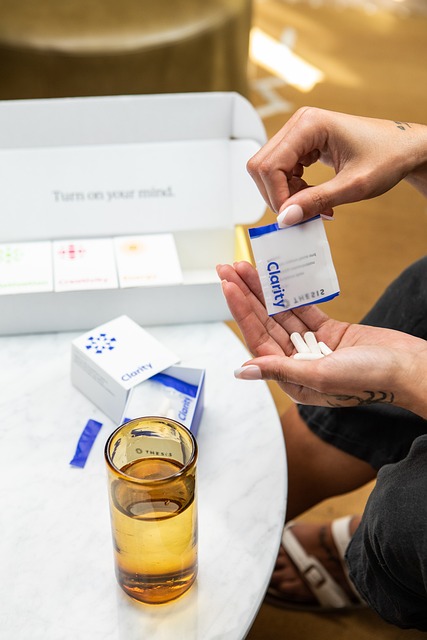Cellular fatigue, driven by chronic stress, lifestyle factors, and inflammation, can be alleviated through PRP therapy for fatigue, a natural and innovative approach. This treatment uses platelet-rich plasma from the patient's own blood to stimulate tissue repair, boost collagen production, and reduce inflammation. By addressing root causes like oxidative stress and disrupted cellular communication, PRP therapy not only provides immediate relief but also enhances long-term cellular function, leading to sustained energy levels, improved physical performance, and enhanced quality of life for chronic fatigue sufferers. Scientific studies support its effectiveness in managing fatigue symptoms.
Fatigue is a prevalent condition affecting millions, often stemming from cellular dysfunction. Understanding the underlying causes and effects is key to long-term relief. One promising approach gaining traction is Platelet-Rich Plasma (PRP) therapy. This natural, regenerative treatment boosts cellular function by harnessing your body’s own healing mechanisms.
This article delves into the science behind PRP for fatigue, exploring its role in revitalizing cells and offering a lasting solution for those seeking lasting energy and vibrancy.
- Understanding Cellular Fatigue: Causes and Effects
- The Role of Platelet-Rich Plasma (PRP) Therapy
- How PRP Therapy Boosts Cellular Function
- Long-term Benefits of PRP for Fatigue Relief
Understanding Cellular Fatigue: Causes and Effects

Fatigue at a cellular level is a complex physiological state resulting from various factors affecting our bodies’ intricate processes. When cells, the fundamental units of life, experience prolonged exhaustion, it can have significant impacts on overall health and well-being. This condition often stems from an imbalance within cells, triggered by chronic stress, poor lifestyle choices, or underlying health issues.
One of the key players in cellular fatigue is inflammation, a natural response to injury or infection. Prolonged inflammation can disrupt cellular communication, hinder energy production, and damage cellular structures. Additionally, oxidative stress, caused by an imbalance between free radicals and antioxidants, contributes to cellular aging and fatigue. PRP therapy for fatigue emerges as a promising approach to combat these issues, offering potential relief by promoting cellular repair and regeneration.
The Role of Platelet-Rich Plasma (PRP) Therapy

Platelet-Rich Plasma (PRP) therapy has emerged as a promising approach to boosting cellular function and providing long-term fatigue relief. This innovative treatment harnesses the body’s own healing mechanism by utilizing a concentrated solution of platelets derived from the patient’s blood. PRP therapy for fatigue offers a natural way to stimulate tissue repair, enhance collagen production, and promote anti-inflammatory responses, all of which contribute to improved overall health and reduced fatigue levels.
The process involves extracting a small sample of blood, processing it to isolate the platelets, and then injecting the concentrated PRP back into the body. This targeted therapy can be particularly effective for conditions related to chronic fatigue, such as muscle pain, joint issues, and slowed cellular regeneration. By accelerating the body’s natural healing process, PRP therapy aims to restore balance, increase energy levels, and provide lasting benefits for those seeking relief from long-term fatigue.
How PRP Therapy Boosts Cellular Function

PRP therapy for fatigue offers a novel approach to enhancing cellular function, ultimately promoting long-term energy levels. This cutting-edge treatment leverages the body’s natural healing mechanism by utilizing platelet-rich plasma derived from a patient’s own blood. The process involves concentrating a high volume of growth factors and proteins within the plasma, which are then injected into affected areas. These growth factors serve as powerful signalers, stimulating cellular regeneration and repair.
By accelerating the body’s inherent healing process, PRP therapy boosts cellular function in several ways. It encourages the production of new, healthy cells while also enhancing communication between cells, ensuring they work in harmony. This targeted approach not only relieves immediate fatigue symptoms but also strengthens the body’s overall resilience against future energy depletion, providing long-lasting relief and improved quality of life.
Long-term Benefits of PRP for Fatigue Relief

The long-term benefits of Platelet-Rich Plasma (PRP) therapy for fatigue relief are becoming increasingly recognized in the medical community. This cutting-edge treatment involves infusing concentrated platelets directly into areas affected by chronic fatigue, such as joints or muscles. PRP therapy stimulates the body’s natural healing process by releasing growth factors that promote tissue repair and regeneration.
By harnessing the body’s inherent ability to heal itself, PRP offers a sustainable solution for managing long-term fatigue. Unlike temporary fixes, this approach addresses the underlying causes of fatigue, leading to improved energy levels, enhanced physical performance, and a reduced reliance on external stimulants. Studies have shown promising results, indicating that PRP therapy can significantly alleviate symptoms of chronic fatigue over an extended period, ultimately improving the overall quality of life for patients.
PRP therapy for fatigue offers a promising approach to revitalizing cellular function and providing long-term relief. By harnessing the body’s natural healing mechanisms, this innovative treatment targets the root causes of fatigue, leading to improved energy levels and overall well-being. As research continues to evolve, PRP therapy has the potential to revolutionize how we combat chronic fatigue, offering a glimmer of hope for those seeking sustainable solutions.
